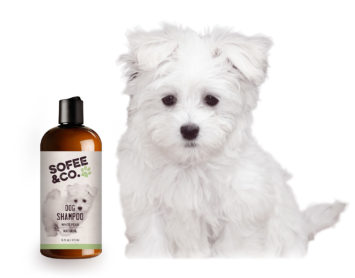As any dog owner knows, trimming your pup’s luscious locks are a regular necessity. Of course, the regularity of that necessity depends on your dog’s coat and lifestyle, but no matter the dog, an occasional trim is unavoidable. If you are the type to tackle this task at home, you may have found that over time, the trim may take a little longer, be a little more challenging to accomplish, or perhaps the cut isn’t as nice and even as it used to be. Upon inspection of your tools, it is likely that you found your clipper and its blades to be the problem. Well good new, this is an easy problem to remedy! In this article, I will discuss everything that you need to know about the task of sharpening those clippers in order to get them back up to snuff painlessly.

The major steps in the process have been highlighted; this way, once you are familiar with the details, you will likely be able to use just the headers as a very basic step by step in the future! Here’s the gist of it though, once you realize that your clippers are not behaving quite as nicely as they used to: setup your workspace, disassemble your clipper blades (without forgetting the order of assembly), clean the blades, as well as the head of the clipper, ready your sharpening surfaces (the whetstone), sharpen the blades, re-clean the blades in order to remove metallic shavings, oil and then reattach the blades to the clipper, and finally, check that the blades are working well.
Things You’ll Need
- Large washcloth or towel – Your non-slip workspace, to define it and to make for an easier clean up.
- Two small bowls – One will be used to hold the screws, and any other small parts of the clipper unit while the other will be used to to submerge the blades in the cleaning solution
- Screwdriver – For removing the screws that hold the blades together on the head of the clipper
- Small cleaning brush – For removing hair, dirt and debris from the blades and from the clipper head
- Cleaning solution – For soaking the blades, often made specifically for blade cleaning by the same companies who make the clippers
- Whetstone – The tool used to actually sharpen the blades against.
**You will need two different grits, one coarser (about 4000 grit) and one finer grit (about 8000 grit or a littler finer); this can be either one stone with two different grit sides, or two different stones, whatever you prefer.
**If your blades are ceramic, you will need to use a diamond sharpening stone instead of a whetstone
- Small bucket or bowl of water, large enough to submerge the whetstone – To allow the whetstone to saturate with water
- Small spray bottle of water – To wet and lubricate the surface of the whetstone for while sharpening
- A small cloth or paper towel(s) – To dry the blades after cleaning
- Oil – To lubricate the blades prior to reassembly
Workspace Setup
Before beginning the cleaning and sharpening process, it is imperative that you have an organized an open workspace. You shouldn’t need much room, but you don’t want to feel cluttered during this process. An unorganized or cluttered workspace can lead to the loss of the small parts of the clipper blade assembly.
Disassemble Clipper Blades
Before disassembling your clipper, first unplug it, or at least be sure that it is turned off. The blade assembly is most likely held onto the clipper head with a couple of small screws; so at this point, you’ll use the screwdriver to remove those screws and then remove blades from clipper.
**Two important notes:
- Before taking the blade assembly completely apart and removing it from the clipper, you’ll want to take a mental note of how the blades are aligned and how all of the parts fit together. In order to save yourself any frustration when you are trying to put everything back together, you may even want to snap a quick picture of the assembly on your phone to make sure that you have a reference for when it comes time to put everything back together again.
- Do not lose the screws or any other small parts in the assembly; put them in a safe place. I like to use a small, shallow bowl to contain any and all screws or small parts that come off of the blade assembly.
Clean Blades and Clipper Head
One of the most important parts of the clipper blade sharpening process is to be sure that the blades are cleaned thoroughly, before and after sharpening. As previously discussed even the smallest amount of dirt or debris can have a big impact on the sharpness of the blades or, in this case, your ability to get the blades nicely and evenly sharpened.
While the blades soak in the cleaner, take this moment to inspect and clean the clipper head. Once again, you can use a small brush that you used to brush the blades. Brush away any and all hair, dirt or debris that you can see. Once this is done and an adequate amount of time has passed for the soaking blades, you can take them out of the cleaning solution and gently wipe and dry them off with a small, soft washcloth, or a paper towel. Once they are dry, if they still appear dirty, you can repeat the cleaning process by re-soaking and then drying them. This can be repeated as many times as necessary.
**Again, sometimes the clippers (and blades) only really need a good clean rather than a sharpening. If you think this may be the case, feel free to skip to the section entitled Reassemble. If, however, you would like to proceed with the sharpening, read on!
Ready Your Sharpening Surfaces
There are a few notes to consider when setting up your sharpening space. First of all, it is important to make sure that your whetstone is secured and won’t move during sharpening; this should not be an issue for you since you will be working on the towel that you put down earlier as your workspace, but please just check that the whetstone is in a position where it will not slide. It is also important that the stone is wide enough to comfortably accommodate your clipper blade; again, as long as you are not using an exceptionally small whetstone, this shouldn’t be a problem, as a standard whetstone should be adequately sized.
Sharpen the Blades
Finally, you have arrived at the part you’ve been waiting for: sharpening the blades! Coincidentally, this might actually be the fastest part of the process, once you’ve got it down. You will be sharpening flat sides of both blades by keeping them flat while sharpening, and running them side to side on, first, the coarse whetstone and then, later, the finer stone. You will do two sets for each blade, on both coarseness of stone. Don’t worry, I’ll explain!

Now, put aside the larger blade for the moment, and repeat this exact same process with the smaller, inner blade. As with the larger blade, the teeth should be facing the wide edges of the stone, and the blade surface touching the stone should be the flat one, the one that faces outward, to the larger blade when assembled.
Once both blades are sharpened on the coarse stone, repeat the process for both blades on the appropriately wetted finer grit stone.
**The most important parts of sharpening are:
- Make sure that the blades are thoroughly cleaned in advance.
- The blades need to remain flat while being sharpened.
- Both blades should be sharpened perpendicular to the teeth, that is side to side, not front to back.
- The blades should be sharpened with gentle-moderate pressure, not heavy pressure!
- Always sharpen on the coarser grits first and move up to the finer grits.
Once you get a feel for it, it should only take about two to five minutes to sharpen the blades.
Re-Clean Blades After Sharpening
Now that both blades have been sharpened to your liking, you’ll want to quickly re-clean them in order to remove any metal shavings that were created in the process of sharpening, as well as any residual dirt. Once again, place them in that small bowl of cleaner and allow them to sit for about 20-30 seconds. Once the blades appear clean, remove them from the cleaning solution, rinse briefly with water to remove the solution and dry gently with a small cloth.
**Any water left behind can easily lead to rust; so be sure to dry the blades thoroughly.

Oil and Reassemble the Blades and Clipper
The blades can now be reattached to the clippers. Retrieve the screws which you previously removed. Line the blades back up with each other and with the clipper, as they originally were before being taken apart, and secure them in place with the screws and screwdriver. This part can be a little tricky; so just be sure to take the time to get the blades properly lined up.. and be careful, as the blades are quite a bit sharper now!
Check Your Work
After that, pat yourself on the back and feel proud of the new skill that you just learned!! Next time will be much faster and probably much easier. Once you’ve got it down, this whole process should only take a few minutes, and the more times you do this the easier it will be!

![12 Best Dog Clippers for Shih Tzu [Fun & Easy Grooming] 12 Best Dog Clippers for Shih Tzu [Fun & Easy Grooming]](https://shihtzuexpert.com/wp-content/uploads/2017/04/Best-Dog-Clippers-for-Shih-Tzu-1.png)
![Best Cheap Dog Foods - our Top 10 Picks of High Quality Brands That Are Still Affordable [Under $1 per pound!] in 2023 Best Cheap Dog Foods - our Top 10 Picks of High Quality Brands That Are Still Affordable [Under $1 per pound!] in 2023](https://shihtzuexpert.com/wp-content/uploads/2018/01/Best-Cheap-Dog-Food-Featured-image.png)
![6 Best Dog Treadmills for 2023 [Buyer’s Guide] 6 Best Dog Treadmills for 2023 [Buyer’s Guide]](https://shihtzuexpert.com/wp-content/uploads/2019/04/Best-Dog-Treadmills-1.png)


